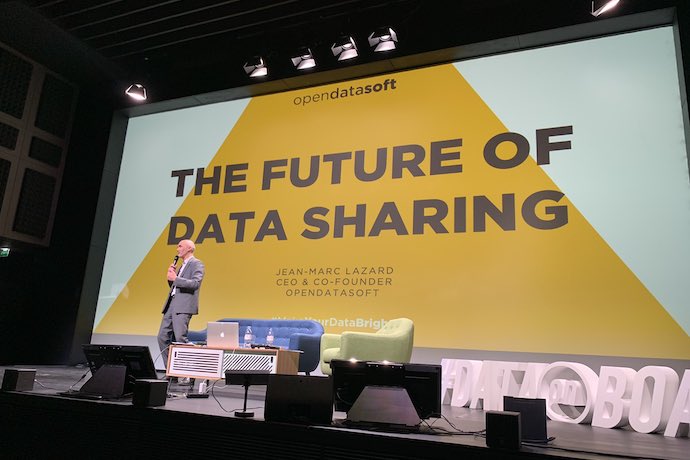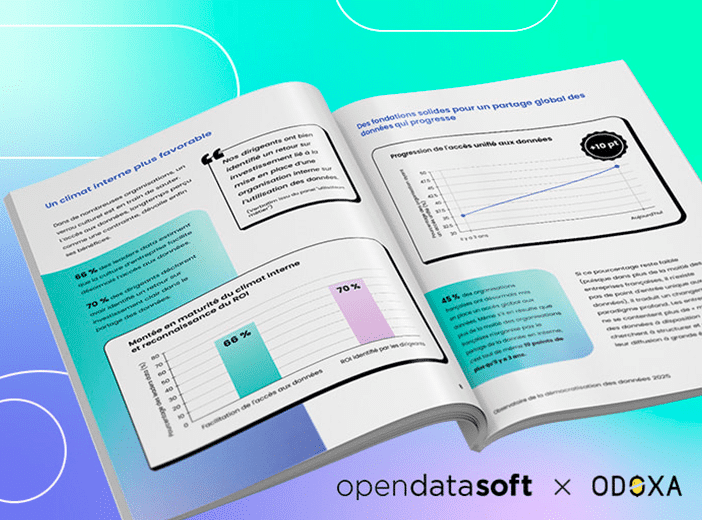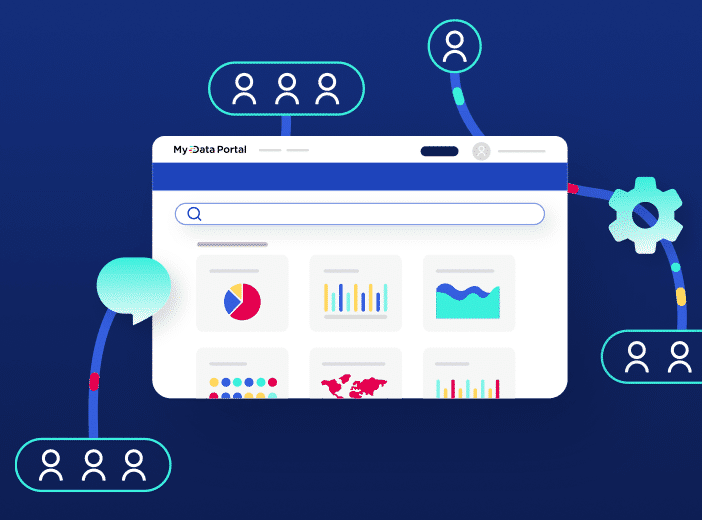3 Takeaways from Data on Board 2019
Data on Board was bigger than ever this year, hosting twice as many participants as last year in a prime venue: Station F, in the 13th arrondissement of Paris.

If you have been following the adventures of Opendatasoft, you’re surely aware that we held our annual event, “Data on Board,” on November 5. The event was bigger than ever this year, hosting twice as many participants as last year in a prime venue: Station F, in the 13th arrondissement of Paris. This European summit brought together 480 data enthusiasts for fascinating talks by 22 international speakers representing a variety of fields in the public and private sectors.
In order to address issues related to various professions, the day’s events were divided into presentations and panels (on the Main Stage) and technical workshops (on the Junior Stage). View the event Data on Board program here.
Having spent the day at the Main Stage, I have compiled a “top 3 list” of takeaways I drew from this series of aspirational talks:
1. Boosting value creation based on our data
“Data are simultaneously the problem and the solution: What’s needed is to give it value.” With this observation, Cyril Perducat, EVP IoT & Digital Offers at Schneider Electric, sets out the complexity faced by stakeholders engaged in data-sharing processes.
Given that any company is potentially “an untapped database”, says Jean-Marc Lazard, co-founder and CEO of Opendatasoft, it is not so much the data themselves that are at stake, but the value that they could potentially generate. Therefore, companies in both the public and private sectors must not share their data without considering the future circulation of that data and the value they will produce. “You have to be able to find interesting data and adapt them”, notes Claire Falzone-Allard, CEO of Nova Veolia. What is the ultimate goal? “Take an action that will improve everyday life. The value of the data lies in action.” Yann Mareschal, Director of Innovative Projects for Bordeaux Métropole (Greater Bordeaux), agrees: “When we created our platform, we tried first and foremost to create an easy-to-use tool, with the goal of encouraging the creation of new services.”
According to Cyril Perducat, “80% of data worldwide are unstructured.” The field, in other words, remains vast.
2. Collaboration is a powerful force for innovation
As Jean-Marc Lazard, CEO of Opendatasoft, emphasized in his closing address: “Our thinking is more and more group-oriented. Many companies have established a backbone of data that cross through both the interior and exterior of their ecosystems.”
Whether the issue at hand is open data or internal data sharing, the implementation of the Opendatasoft portal has prompted a good deal of reflection within companies themselves. “Our portal inspired our employees to build new bridges between departments”, explains François-Xavier Morvan, Sustainability Performance Senior Manager at Kering, the French luxury goods group specializing in fashion, whose well-known brands include Gucci, Yves Saint Laurent, Boucheron, Bottega Veneta, and Alexander McQueen.
Pierre-Philippe Cormeraie, Chief Digital Evangelist at the BPCE Group, who described BPCE portal as a “can opener,” was surprised to see many team members using open data for internal projects ( learn more here : banking and open data). Similarly, Yann Mareschal revealed to the audience that “City employees are the first users of the platform.” The same type of phenomenon exists at Infrabel, which manages Belgian railway infrastructure: “The launch of the portal and the issues it raised led to a great deal of consideration internally”, notes Séverine Degueldre, the company’s Information Officer.
But data collaboration doesn’t stop there. “We are witnessing the realization that innovation is co-constructed with external stakeholders“, explains Claire Falzone-Allard. This is why many companies are setting up “hackathon“-type contests to bring new ideas to the surface. Kering’s “Hack to Act,” for example, brought together 80 developers and technical experts to work on creating apps devoted to sustainable luxury. At the end of the event, 16 projects were selected; they are currently being reviewed by the Kering Group.
Sofia Ganhila, Technology Analyst at EDP (Energias de Portugal), is a fan of this type of practice as well: “We rely on citizen communities to share and enhance our data analysis methods” (read our EDP client story). In the same collaborative vein, the credit insurance company Euler Hermes created datasets in cooperation with HEC researchers following an analysis of their needs. “We have chosen to look for leads directly with data reusers.” – Jennifer Baert, the group’s Global Head of Information & Credit Risk Assessment (learn more about our Euler Hermes client story).
Examples of collaboration certainly don’t end there! We’ll return to this topic in future articles.
3. Moving the goal posts and promoting risk-taking
As Claire Falzone-Allard puts it, “We’ve made the shift toward collaboration, but we still need to work on risk-taking and removing organizational silos.”
For many companies, data sharing still seems like a threat. Indeed, sharing information internally or externally does pose the risk of exposing oneself to criticism. However, it’s only by leaving our comfort zones that we discover sources of inspiration and innovative approaches.“We published a dataset that makes it possible to quantify and geolocalize all crimes committed in Mexico City”, explains Alejandra Marysé González García, Director of Open Government for Mexico City. “This information provoked a lot of criticism. Citizens got the impression that the city’s crime rate had suddenly skyrocketed.That was a risk we had to take in order to try to improve public policy.”
By publishing data regarding the Gucci label’s environmental impact, Kering dared to expose itself to public judgment: a small sacrifice that made the group a pioneer among luxury companies in the CSR movement.
To bring this article to its conclusion, I’ve selected an expression used by Laure Huguenin, Open Data Policy Officer for the Centre-Val de Loire Region: “Making data visible makes data interesting.”
Let’s make it interesting to trust, to take risks, to share, to co-create, to disseminate information… The movement is underway!



